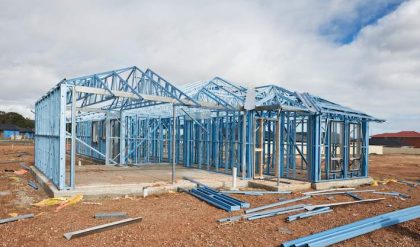
Structural engineers often work alongside civil engineers and architects as part of a construction team. “In a nutshell,” according to the Institution of Structural Engineers, “if a structure was a human body, then the architect would be concerned with the body shape and appearance, and the structural engineer would be concerned with the skeleton and sinews.”
Structures must be able to deal with the conditions in which they are built. A house in Canada must have a roof that can bear the weight of heavy snow and a stadium in California must be able to withstand earthquakes, for example. When building bridges, designers must take into account the conditions of terrain, wind, water and traffic volume. Structural engineers consider all of these factors and provide technical advice about the project.
“Structural engineers battle gravity, wind, snow and rain every day to provide the world with outstanding structures,” Kate Leighton, a structural engineer, said in “Careers in Structural Engineering, a publication of the Institution of Structural Engineers. “They are experts at solving problems, meeting challenges and providing creative solutions.”
Structural engineers “design roof framing (beams, rafters, joists, trusses), floor framing (floor decks, joists, beams, trusses, girders), arches, columns, braces, frames, foundations and walls,” according to the National Council of Structural Engineers Association. “In bridges, they design the deck — or riding surface, girders or stringers, and piers. The materials they use include steel, concrete, wood, masonry, and aluminum. Engineers design the structure to resist forces from gravity, earthquakes, high winds, water, soil, collisions and blast explosions.”
A structural engineer’s job includes:
● Analyzing blueprints, maps, reports, and topographical and geological data;
● Estimating the cost and quantities of materials, equipment and labor;
● Computing load and grade requirements, water flow rates and material stress factors to determine design specifications;
● Inspecting project sites to monitor progress and ensure the project is being constructed according to design specifications;
● Conducting studies of traffic patterns or environmental conditions to identify potential problems and assess how they will affect the project.
Critical skills that a person needs in structural engineering include an in-depth understanding of physics and mathematics. A structural engineer must also know the properties of various materials, such as their density, hardness, tensile strength, bulk modulus and bending strength. They need to be able to calculate how different materials will perform under stresses such as compression, tension, bending and twisting, as well as under various environmental conditions of temperature, pressure, corrosive gases and liquids, and even radiation. They also need to be able to predict how these materials will perform over an extended period of time.
Structural engineers rely increasingly on computer-aided design (CAD) systems, so proficiency with computers is essential. In addition to speeding up the drafting process, CAD systems allow for quick and easy modifications of designs and three-dimensional (3D) visualization of finished parts and assemblies.


Comments are closed.